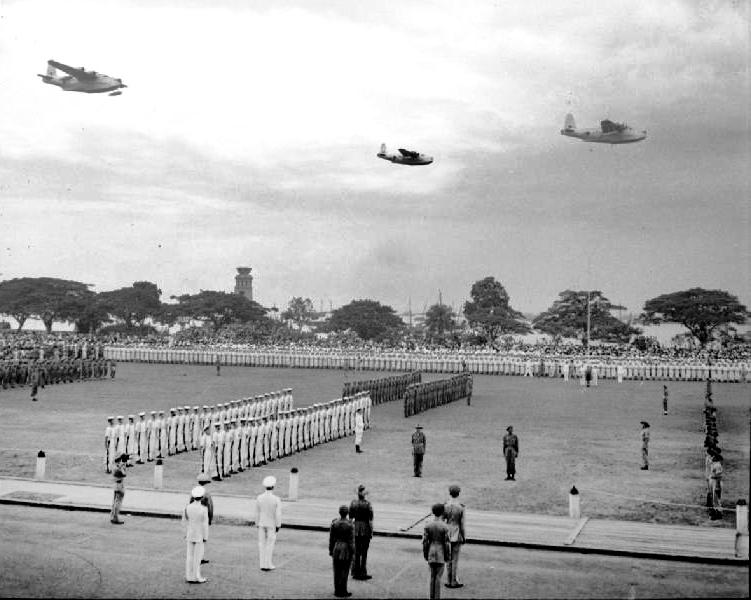VJ Day Hero
Club Member Norman Wilson almost accepted the Japanese surrender in Singapore on VJ Day. His story was published in The Times on Saturday August 15, 2020
Our VJ Day Hero
Members will all know that one of our still active members, Norman Wilson, now 97, was a renowned pilot of Sunderland aircraft in WWII. Norman spent the last year of the war in the Far East.
Norman says: “ What members may not know, and only some may recall me telling the Club, is an incident at the end of the war when I almost personally accepted the Japanese surrender. The story is about my wartime experiences but it bears repetition and is obviously now nationwide, since it was repeated in the Times the day after the VJ Day 75th Anniversary.”
We are proud to republish the article here in full, by kind permission of The Times.
Flight Lieutenant Norman Wilson still remembers the roar of the Sunderland flying boat he flew to deadly effect in the closing days of the Second World War.
He and fellow crew members from 209 Squadron were among the last to attack enemy shipping in the South China Sea when they sank a “sugar dog” freighter and a supply barge on August 11, 1945, four days before the Japanese surrender.
Mr Wilson, 98, who lives near Chelmsford in Essex, believes that he is the last survivor of the crew and the last living witness to the damage that Short Sunderland aircraft could do.
Mr Wilson flew a Sunderland flying boat.
Escaped Death Twice
He is one of three brothers who became pilots and two to fly missions over enemy lines. “My story is not one of great heroics, just of what happened to a typical volunteer doing what he was told for the war effort,” he said.
Mr Wilson, who escaped death on at least two occasions, almost became the first person to accept the surrender of Japanese troops in Singapore.
The surrender was formally accepted by Lord Mountbatten, Supreme Allied Commander South East Asia, on September 12, but Mr Wilson had arrived three days earlier.
“On our arrival at Seletar flying boat base at Singapore, and being possibly the very first there, we were transported ashore by a Japanese crew boat. A Japanese officer wanted to surrender his samurai sword to me. Stupidly, I refused it and told him to report to the docks where Lord Mountbatten would shortly arrive.”
“Flying Porcupine”
He said that he had always regretted it. The Japanese officer was rumoured to have been Vice Admiral Shigeru Fukudome, one of two men to discuss how the surrender would proceed, but he thought it was likely that he was a more junior officer.
The Sunderland was a fearsome bomber, more than 100ft from one wing-tip to another and so bristling with machine guns that the Germans called it the flying porcupine.
His first brush with death came on April 20, 1945, when his Sunderland was given smoke bombs for bombing practice. “Unfortunately, our navigator, Willie Hubert, dropped one of the primed bombs inside the aircraft,” he recalled. “It detonated and filled the plane with dense smoke. I was the second pilot. In the cockpit we could not see the control column let alone the instruments.”
The first pilot shouted that they should try a landing while Flight Lieutenant Wilson tried to work out what was going on by putting his head out of a rear sliding window in the cockpit.
“I then slid the window panels back to see if I could do so out of the front window when the changed airflow over the cockpit window miraculously sucked the smoke out of the plane in a second. We were by then straight and level, about 5ft above the water.”
Nose Up, Wing Down
They landed safely until the swell stuck the starboard wing-tip, causing one of the propellers to thrash up spray. “Instinctively I grabbed the wheel and applied full power. Luckily the aircraft responded and took to the air at an incredible nose-up, wing-down angle.” They were able to return to Mombasa, Kenya, without further incident.
While there he was due to join a night radar training exercise but was surplus to requirements and taken ashore. Shortly afterwards the plane crashed into a hill, killing many of the crew.
Mr Wilson had volunteered for the RAF on his 18th birthday in 1941.
“It enabled me to achieve my greatest ambition and the flying boat era was an exciting and pioneering time in aviation history,” he said. “I count myself extremely fortunate to have been at least a small part of it and I enjoyed every second.”
In Contrast
It is barely three months ago that we acclaimed the feat of Mark “Disco” Discombe AFC for his historic memorial flights for Captain Tom and VE Day. You cannot keep a great flyer out of the air. Mark, son-in-law of our Foundation and International Chairman, Malcolm Acors and currently Officer Commanding the Battle of Britain Memorial Flight, took to the skies again as the Country and Commonwealth celebrated the 75 year anniversary of the end of the war in Japan.
Change Of Formation
Malcolm explains: “When they flew over the Arboretum, Mark was the lead fighter, the Battle of Britain Hurricane. To his right was the Battle of Britain Spitfire which he flight tested last year after being completely rebuilt. To his left was the D-Day Spitfire and, at the rear, a modern clipped wing ground attack Spitfire. With, of course, the Lancaster in front.”
Later, over Horse Guards Parade, the fly-past formation was different “It included the Lancaster in a five-ship formation with Mark again in the Hurricane, the only one available as the V-J Day Hurricane is being completely rebuilt. This was filmed two weeks before the VJ Day Anniversary in case of bad weather, and so as not to attract too many visitors in London.
Flies Like A Surfboard
“Mark’s Hurricane was the one in which he won his Air Force Cross. It is one of his favourite planes and more difficult to fly than the Spitfires”, says Malcolm. Mark adds: “Flying Spitfires is like wearing gloves; the Hurricane is like flying a surfboard.”
Related pages...
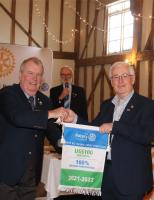
Club wins Foundation Awards
more At the 2023 Rotary Foundation Lunch, Rotary Club of Billericay received two best in District awards

Latest newsletter
more See the Flipbook Version below (Please note paging the Flipbook backwards is NOT working with older versions of the Microsoft EDGE browser. Firefox, Chrome and the latest Microsoft EDGE Browser DO WORK.)
Published Club Newsletters
more The Club monthly Newsletters can be accessed here.
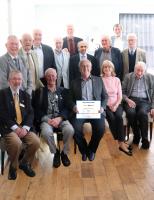
Citation Celebration!
more Rotary International award us a Rotary Citation for our achievement and commitment to achieving our goals, which ultimately helps strengthen Rotary and shape our future”.
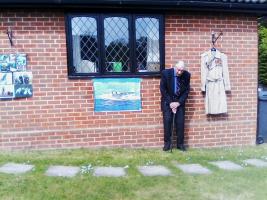
VE Day 75 Remembered
more Three of our members took part in VE Day celebrations in 1945. Here they recount their VE75 celebrations and recall what happened to them 75 years ago
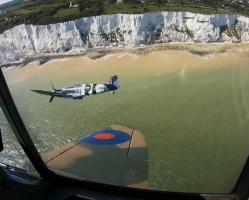
VE Day 75 Anniversary - 2020
more Our Club celebrates two links to WW II - our 97 year old active club Member and Deputy Treasurer Norman Wilson, and Mark Discombe, AFC, Officer Commanding Battle of Britain Memorial Flight.
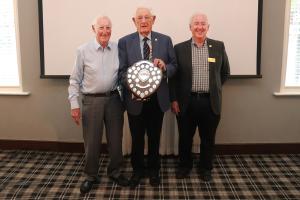
Best Club Newsletter FOUR YEARS IN A ROW
more We win the best Club Newsletter in the District for the fourth year in a row!
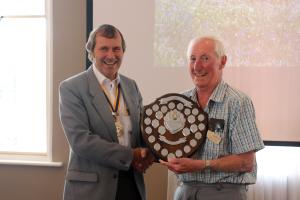
District 1240 Best Club Newsletter 2017-18
more It's a Hat-Trick - we win the District Best Bulletin Award for the third year in a row.
.jpg)
Best in Britain & Ireland 2018
more We win best club Bulletin of all Rotary Clubs in Great Britain and Ireland
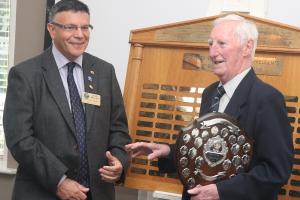
District Newsletter Winner 2016-17
more Newsletter Editor Trevor Bond reflects on winning the District Best Newsletter award for the second year in succession

Annual Report 2016-17
more Immediate Past President Mike Sinclair reviews his year of achievement in 2016-17.
Rotary International Official Blog
more This page shows the latest information blogged by Rotary International.
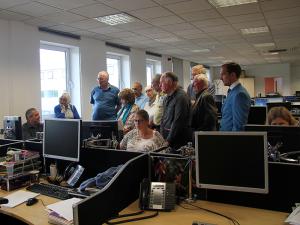
The Press and Us
more Ten club members and partners visited the Billericay Gazette Offices to cement working relationships and get an appreciation of how they work.
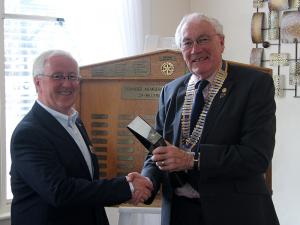
Return of the Trophy
more Presentation to club Webmaster Peter Greene by President Ed Harrison

2015 District Website Award
more For the second year running, we were the very proud recipients of the District's Stan Keller Trophy for the best website in the District.
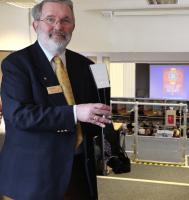
Website wins District Award
more The Club wins the Stan Keller Award for the best club website in the District
back to page above this...
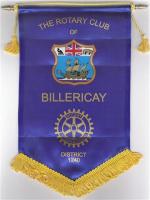
Latest News
back This page groups together sub-pages (shown below) for latest news of exciting future events, and recently completed items, all promoted by the Rotary Club of Billericay. Click on the item which interests you.
